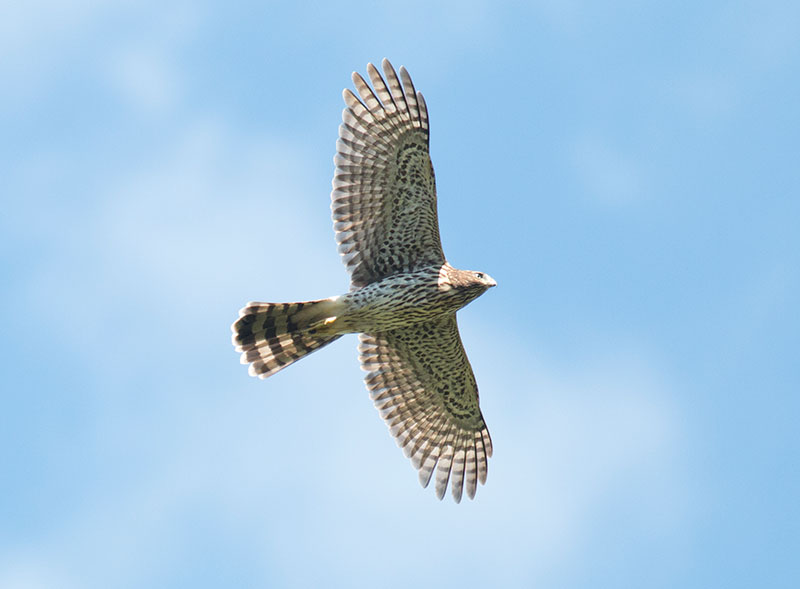Cooper's Hawk
10/2/16
By David Brown
Last year I was in my backyard watching a small group of house sparrows feeding on the ground. Out of the corner of my eye I spotted a hawk gliding over my neighbor's tree. After clearing the tree it tucked its wings and began to dive. As the hawk hit the ground the sparrows exploded away, except for one unlucky bird that was carried away by talons of the Cooper's hawk.
The Cooper's hawk is a member of the Accipiter genus. The two other species of this genus we have locally are the sharp-shinned hawk and northern goshawk. Accipiters have long tails that help them navigate wooded areas, giving them a distinctive shape that distinguishes them from the red-tailed hawk and other members of the Buteo genus.

Cooper's Hawk
The Cooper's hawk is most similar to the smaller sharp-shinned hawk. While soaring, the Cooper's hawk is shaped like a cross because of the large head and straighter wings. The sharp-shinned hawk appears T-shaped because it has a smaller head and pushes its wings forward. The outer tail feathers of the Cooper's hawk are shorter than the central tail feathers which gives the tail a more rounded look.
The Cooper's Hawk is found in wooded habitat including suburban areas. It often goes after smaller birds at bird feeders. It is found year-round across most of the contiguous United States. It breeds as far north as southern Canada and winters as far south as southern Mexico. The Cooper's hawk has an increasing breeding population in Pennsylvania. Fall Cooper's hawk migration peaks in October in Pennsylvania.
It is crow sized with a 31 inch wingspan and length of 16.5 inches. Like many raptor species, males are smaller than females. After birth, a Cooper's Hawk remains in juvenile plumage for one year. Juveniles are brown and white with vertical streaking on the breast. Adults are blue-gray with a distinctive cap and have red barring on the breast.
I have had many close sightings of Cooper's hawks. Right after I purchased the camera that would lead to my interest in birds, one flew through my yard and perched on my the handrail of my neighbor's porch for over fifteen minutes. It was the first hawk I ever photographed.
Recently, I was birding along a field edge next to a wooded area and saw one chasing a bird through the air, perhaps a blue jay. The prey made a sharp turn into the woods at the right moment and was able to get away.
Migrating Cooper's hawks can be seen at local hawk watching sites such as the Route 15 overlook near South Williamsport.